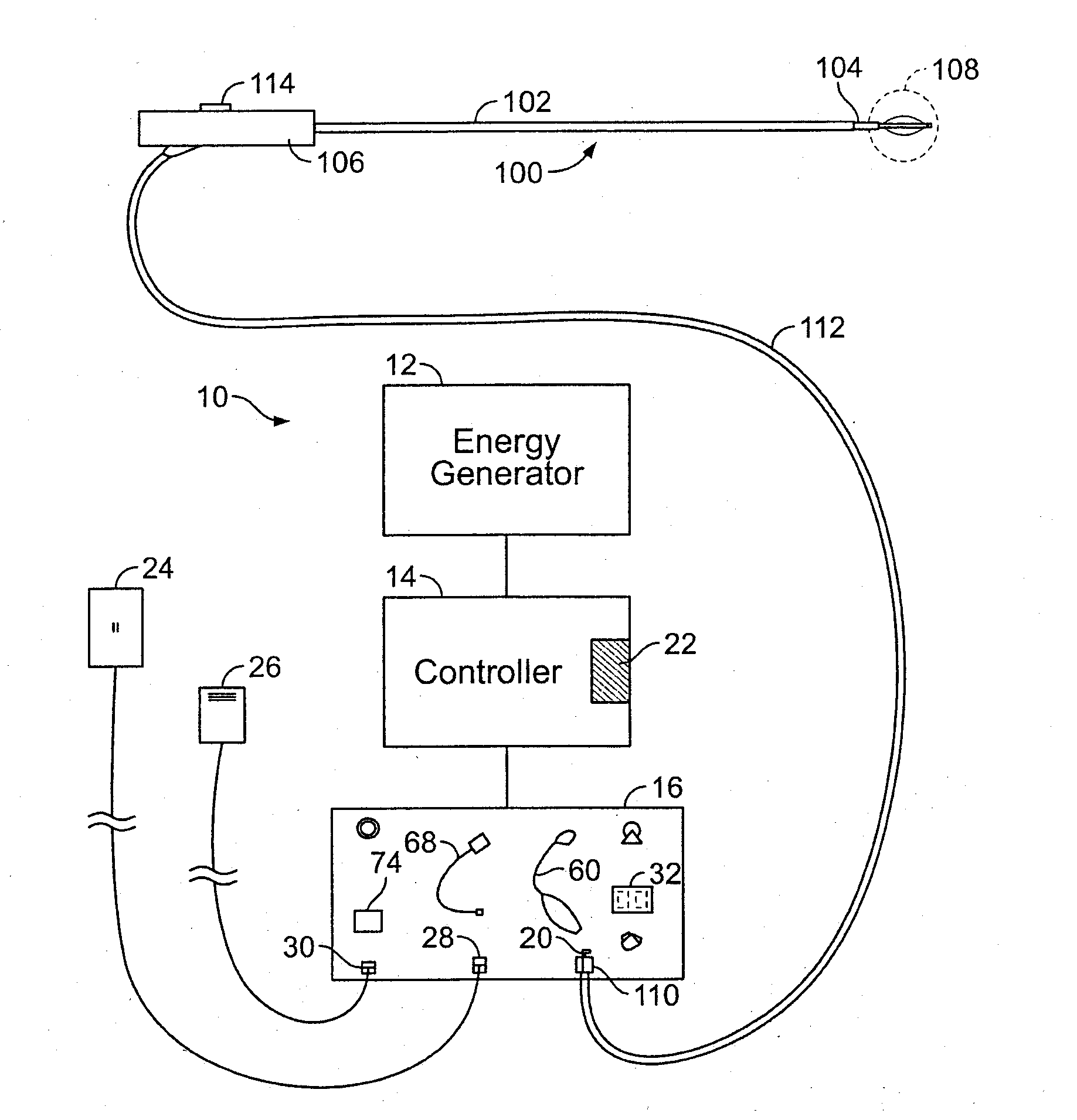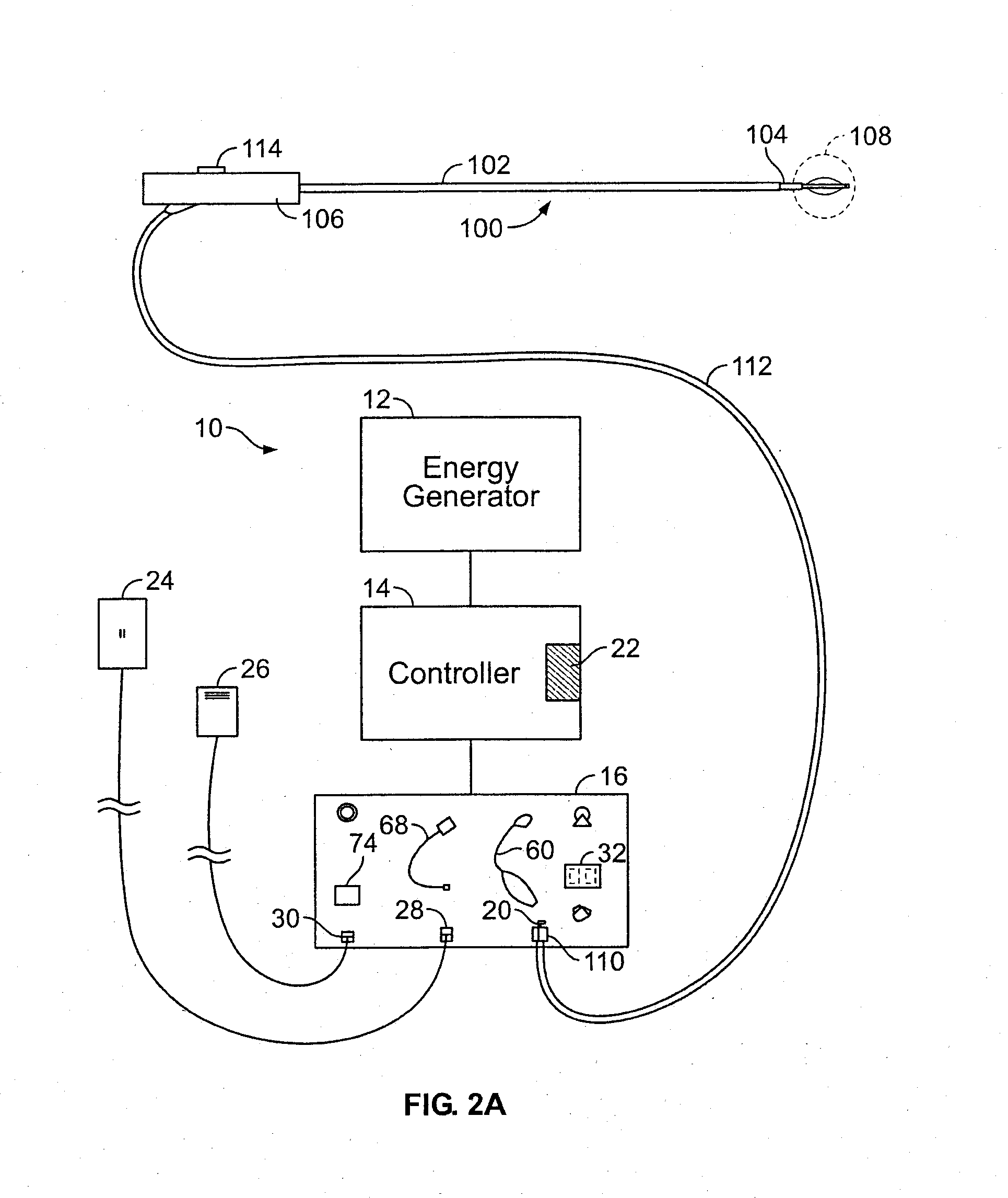Energy delivery devices and methods
a technology of energy delivery and energy, applied in the field of energy delivery devices and methods, can solve the problems of asthma sufferers' difficulty in breathing, high doses of corticosteroid anti-inflammatory drugs that can have serious side effects that require careful management, and difficulty in patient compliance with pharmacologic management, so as to increase the likelihood of each leg flexure and reduce the profile
- Summary
- Abstract
- Description
- Claims
- Application Information
AI Technical Summary
Benefits of technology
Problems solved by technology
Method used
Image
Examples
Embodiment Construction
[0046]It is understood that the examples below discuss uses in the airways of the lungs. However, unless specifically noted, the invention is not limited to use in the lung. Instead, the invention may have applicability in various parts of the body. Moreover, the invention may be used in various procedures where the benefits of the device are desired.
[0047]FIG. 2A shows a schematic diagram of one example of a system 10 for delivering therapeutic energy to tissue of a patient for use with the device described herein. The illustrated variation shows, the system 10 having a power supply (e.g., consisting of an energy generator 12, a controller 14 coupled to the energy generator, a user interface surface 16 in communication with the controller 14). It is noted that the device may be used with a variety of systems (having the same or different components). For example, although variations of the device shall be described as RF energy delivery devices, variations of the device may include...
PUM
 Login to View More
Login to View More Abstract
Description
Claims
Application Information
 Login to View More
Login to View More - R&D
- Intellectual Property
- Life Sciences
- Materials
- Tech Scout
- Unparalleled Data Quality
- Higher Quality Content
- 60% Fewer Hallucinations
Browse by: Latest US Patents, China's latest patents, Technical Efficacy Thesaurus, Application Domain, Technology Topic, Popular Technical Reports.
© 2025 PatSnap. All rights reserved.Legal|Privacy policy|Modern Slavery Act Transparency Statement|Sitemap|About US| Contact US: help@patsnap.com



